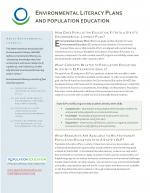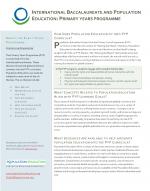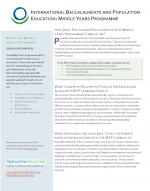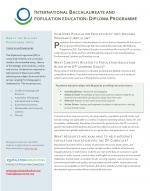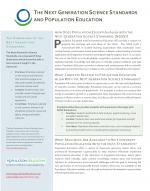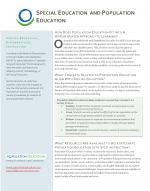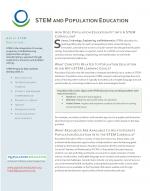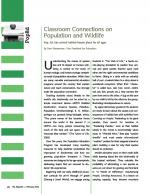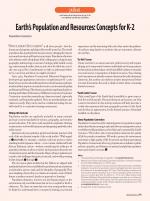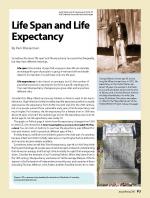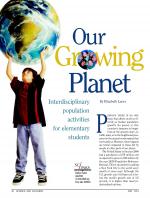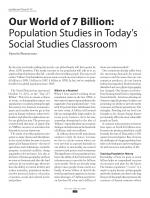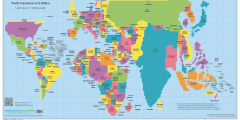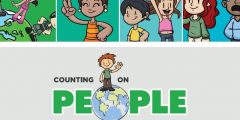Book Lists
Recommended Children’s Literature
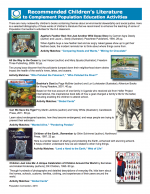
An annotated list of children’s books that we recommend to enhance the teaching of Population Education lesson plans and help bring content literacy into the classroom.
Fact Sheets
Key Facts from the 2024 World Population Prospects report
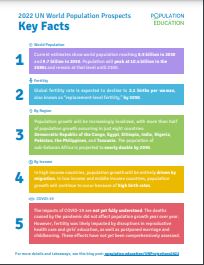
Global population is expected to peak in the mid-2080s. This was just one of many takeaways from the UN’s report on the 2024 World Population Prospects. This colorful fact sheet is perfect for printing and easily digestible in the secondary classroom with five key facts from the report.
The Basics of Population Education
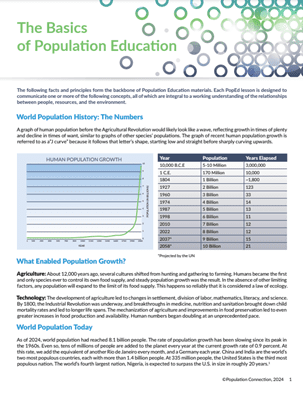
An overview of the concepts and themes covered throughout the Population Education program. Includes: the history of population growth and how agriculture and technology enabled our increase; urbanization; carrying capacity; the environmental impact of our growth and consumption.
21st Century Skills and Population Education
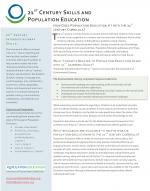
By emphasizing creativity, collaboration, and civic and environmental literacy, Population Education activities address both the skills and the core themes laid out in the 21st Century Skills.
Afterschool Programming and Population Education
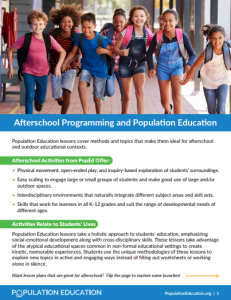
PopEd activities are easy to scale for large or small groups meeting indoors or outdoors. They incorporate physical movement, open-ended play, and inquiry-based exploration for learners of all ages.
Common Core and Population Education
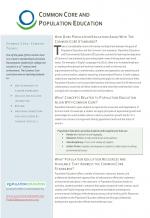
The Common Core Standards call for contextual learning, higher order thinking, and adaptive reasoning in English language arts and mathematics. Population Education materials give students a framework for building these skills in a meaningful way.
Early Childhood Education (ECE) and Population Education
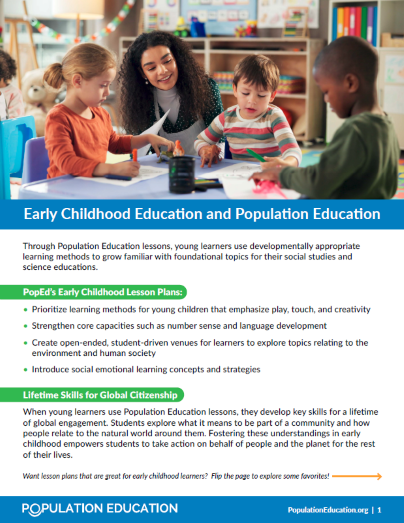
Through Population Education lessons, early childhood learners use developmentally appropriate learning methods to grow familiar with foundational topics for their social studies and science educations.
Environmental Literacy Plans and Population Education
Population is a necessary component of a well-rounded state environmental education program and will help states meet the benchmarks outlined in their respective ELPs.
International Baccalaureate and Population Education: Primary Years Programme
The IB Primary Years Programme emphasizes human relationships with the environment and focuses on the theme of “Sharing the Planet.” Population Education materials encourage students to think globally and consider the impacts of the natural world – a perfect fit for the six themes of the the IB Early Years Programme.
International Baccalaureate and Population Education: Middle Years Programme
By exploring the interactions of people with the world at large, Population Education activities fit seamlessly within the sub-context of Environments in the Middle Years Programme.
International Baccalaureate and Population Education: The Diploma Programme
Population Education curricula emphasizes global consciousness and is a unifying topic across the six groups of the IB Diploma Programme.
The Next Generation Science Standards and Population Education
Population Education activities allow for real-world application of science concepts and can be used as a cross-cutting theme across grade levels and subject areas.
Special Education and Population Education
A variety of teaching strategies and interdisciplinary themes are used in Population Education lessons, allowing teachers to easily differentiate for tactile, visual, written and kinesthetic learners and to reinforce knowledge in multiple contexts.
STEM and Population Education
In Population Education activities concepts in science, technology, engineering and math are explored through student-centered activities which promote inquiry about real-world issues.
Teaching English to Speakers of Other Languages (TESOL) and Population Education
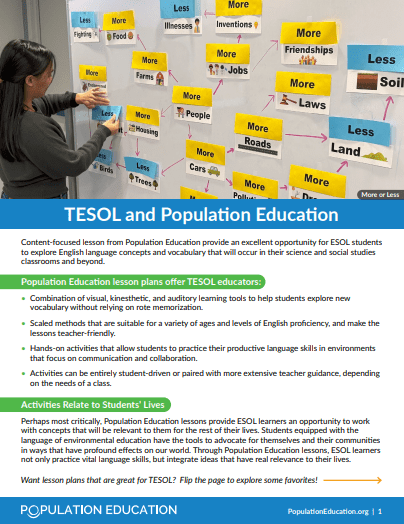
Scaled methods paired with a hands-on approach makes PopEd activities accessible to English Language Learners. Students are able to practice their productive language skills while also exploring the importance of environmental stewardship.
Magazine and Journal Articles
“Classroom Connections on Population and Wildlife”
Population Education has lessons for a variety of ages on animal habitats and how they are affected human actions. Read this article from Population Connection’s Reporter for more information. February 2010; Author: Pamela Wasserman
“Earth’s Population and Resources: Concepts for K-2”
From Social Studies and the Young Learner (a publication of the National Council for the Social Studies), September/October 2005; Author: Pamela Wasserman.
“Girls’ Lives Around the Globe”
Discover classroom lessons to teach about girls’ status around the globe, including education, employment, health and more. From Population Connection’s Reporter, February 2012; Author: Pamela Wasserman
“Life Span and Life Expectancy”
From Social Studies and the Young Learner (a publication of the National Council for the Social Studies), January/February 2013; Author: Pamela Wasserman
“Our Growing Planet: Interdisciplinary Population Activities for Elementary Students”
From Science and Children (a publication of the National Science Teachers Association), May 2001; Author: Elizabeth Lerner.
“Our World of 7 Billion: Population Studies in Today’s Social Studies Classroom”
From Social Education (a publication of the National Council for the Social Studies), October 2011; Author: Pamela Wasserman



